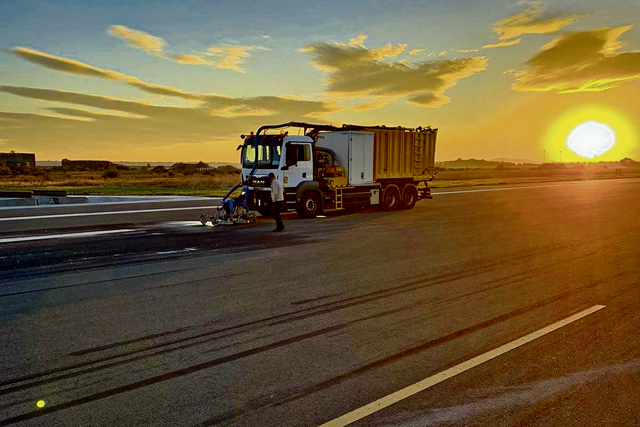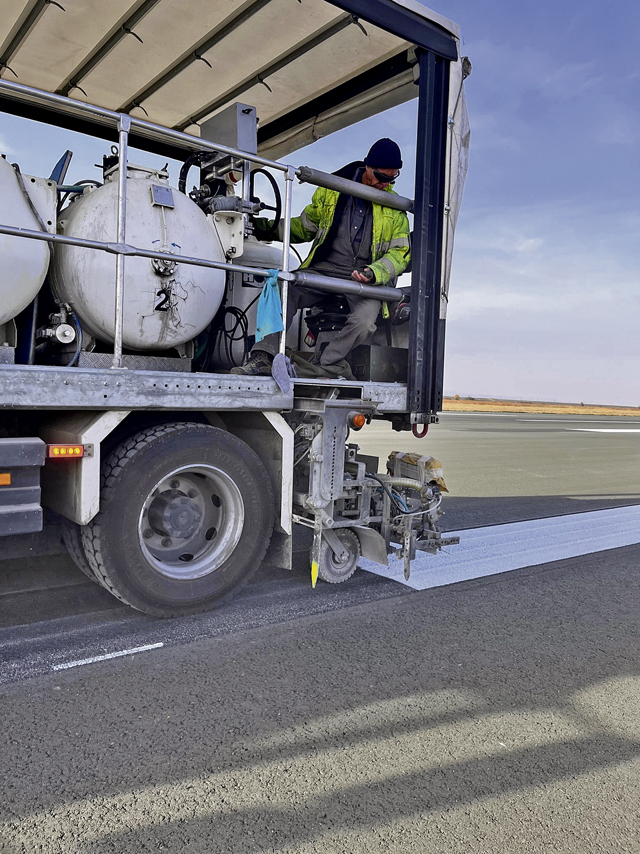
BEZMER AIR BASE, Bulgaria – The 435th Construction and Training Squadron removed paint and re-striped the runway tarmac at Bezmer Air Base, Bulgaria, Oct. 1-Nov. 11.
This project aims to significantly reduce foreign object debris hazards to aircraft and provide clearer air traffic visual aids aligning with European Union Aviation Safety Agency standards.
The request for the 6-week project was received after Bezmer AB was identified as an ideal candidate for upgrades that could also serve as a feasible location for fighter aircraft to partake in combined training missions and operations.
“The hardest part of this was the logistics of getting all of our equipment to this area,” said Ruediger Streissel, 435th CTS chief operations. “The group had to convoy through three countries for over 25 hours.”
Local nationals assigned to the 435th CTS traveled with 11 vehicles to Bezmer AB to remove and re-paint the existing markings on the runway, hammer heads, taxiways and ramps.

The previous airfield markings were made using a non-standard product that separated from the pavement surface and posed a significant FOD hazard to U.S. Air Force fighter aircraft.
“This project was challenging because of the amount of work done in a relatively tight time frame of just 6 weeks,” Streissel said. “Going into this we had little to no experience working with the material of the existing markings, air traffic was not allowed to be disrupted, and weather conditions had to be taken into account.”
During the project, 140 tons of old stripping material was removed and replaced with 50 pounds of retroreflective glass beads and 2,287 gallons of paint.
This project not only further develops relationships with NATO Allies, but it enables future operations from a strategic location while helping the Bulgarian air force transition to F-16 aircraft.
“Taking part in this project improves the capabilities of our partners,” said Lt. Col. Grant Harwell, 435th Construction and Training Squadron commander. “The Bulgarian air force will be transitioning to F-16s from legacy fighter aircraft at this location, so while their current aircraft are not susceptible to FOD concerns this project eliminates those future hazards.”
The 435th CTS engineers and construction teams regularly deploy support to NATO Allies and partners in similar missions.


